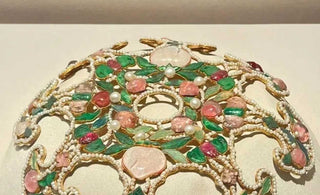
Exploring the Interplay of Art and Literature
Art and literature have long been intertwined, with one medium often inspiring and influencing the other. In the context of Chinese culture, this interplay is particularly fascinating, as the art forms of painting, calligraphy, and poetry hold deep significance and reverence. Chinese artists have used their brush to create stunning visual masterpieces, while writers have woven captivating tales that reflect the beauty and essence of these artistic expressions.
The Symbolism of Chinese Art
Chinese art is renowned for its symbolism and visual storytelling. Traditional Chinese paintings often convey profound meanings through the use of symbols, motifs, and brushwork techniques. Each stroke and color choice is deliberate, imbued with layers of cultural and philosophical significance.
In the realm of literature, these symbolic elements find their way onto the pages, breathing life into characters, settings, and narratives. Writers draw inspiration from the visual language of art, infusing their storytelling with vivid descriptions and poetic imagery. The result is a harmonious fusion of artistic mediums, where the brushstrokes of a painting come alive through the evocative power of words.
Chinese Art as Narrative Inspiration
Chinese art, with its rich history and diverse range of themes, serves as a wellspring of inspiration for literary creations. From ancient myths and legends to historical events and personal anecdotes, artists have captured the essence of these stories on canvas. Writers, in turn, have been captivated by these visual narratives, weaving them into their literary works to bring forth a multidimensional experience for the reader.
The visual narratives depicted in Chinese art often transcend time and space, transporting viewers to different eras and captivating worlds. These artistic masterpieces become a source of inspiration for writers, who draw upon the visual language and symbolism to craft their literary works. The vivid landscapes, majestic figures, and delicate portrayals of daily life offer a rich tapestry of inspiration for storytelling.
Through their words, writers can breathe life into the characters and settings that grace the canvases of Chinese art. They delve into the emotions and motivations of these visual representations, expanding upon their stories and providing deeper insights into their lives. The interplay between art and literature creates a symbiotic relationship, where the brushstrokes of a painting come alive through the evocative power of words.
Moreover, Chinese art serves as a reflection of the cultural identity and values of the society from which it originates. Writers often draw inspiration from these cultural elements, infusing their literary works with themes of tradition, spirituality, and social dynamics. By exploring the narratives depicted in art, writers can shed light on the complexities of Chinese culture and offer readers a deeper understanding and appreciation of its rich heritage.
In addition, Chinese art provides a window into historical events and societal transformations. Paintings depicting battles, court scenes, and everyday life during different dynasties become sources of inspiration for historical fiction and period dramas. Writers can reimagine these historical moments, weaving together fiction and reality to create captivating narratives that transport readers to a bygone era.
The Influence of Famous Works
Numerous Chinese literary works have been directly inspired by iconic artworks. For instance, the famous painting "Along the River During the Qingming Festival" has served as a muse for countless writers, who have crafted stories set against the backdrop of this vibrant and bustling scene. The painting captures the essence of daily life during the Song Dynasty, and its intricate details have sparked the imagination of writers seeking to immerse readers in the splendor and complexities of the era.
Another notable example is the landscape painting "Dwelling in the Fuchun Mountains," which has inspired literary works exploring themes of nature, introspection, and the human connection to the environment. This painting, attributed to the Yuan Dynasty artist Huang Gongwang, evokes a sense of tranquility and contemplation, inviting writers to explore the depths of the human experience through their words.
Conclusion
At Oriental Aesthetics, we celebrate the captivating interplay of Chinese art and literary creations. From the brushstrokes on canvas to the pages of a book, the influence and inspiration flow freely, enriching both mediums and engaging the imagination of audiences. Join us as we continue to explore the harmonious relationship between art and literature, nurturing a deep appreciation for the beauty, symbolism, and cultural significance that these artistic expressions convey.
Experience the transformative power of Chinese art and literature at Oriental Aesthetics, your trusted partner in the world of classical oriental art.
























